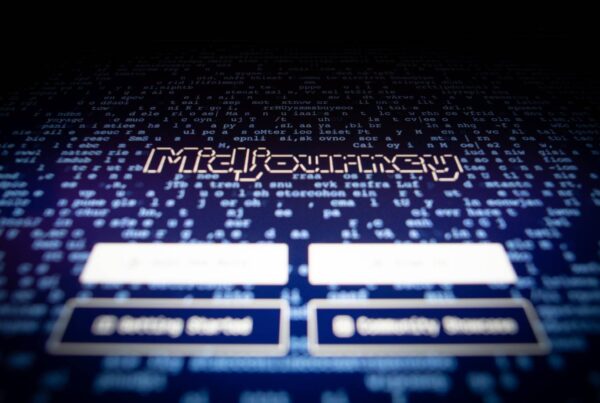Digital identity is one of those deceptively simple ideas that becomes very complicated the moment you try to apply it at real scale. In the UK, the government’s approach has shifted from a failed early attempt to a more modular, standards-based model that plugs into both public and private services. This guide walks through the current UK digital ID setup, how it is being implemented, its benefits and risks, how other countries do it, and the cultural lens that matters to artists, satirists, and anyone whose work relies on critique and anonymity. Along the way we will consider practical realities, long-term consequences, and how creative expression may be affected.
Table of Contents
What “digital ID” means in plain English
A digital ID is a way to prove “I am who I say I am” online to a defined level of confidence. It usually combines:
- An account to sign in to services
- A way to prove identity once, then reuse it
- Rules about how data is checked, shared, stored, and audited
- Mechanisms for revoking or re-verifying credentials when something changes
In the UK this is now centred on two complementary parts:
- GOV.UK One Login: a single sign-in being rolled out across central government services, with options to prove identity through photo ID, banking data via Open Banking, and other evidence paths. Over time it is intended to replace older sign-ins like Government Gateway and the tax-specific accounts many people have been used to for years.
- The UK Digital Identity and Attributes Trust Framework: a set of rules and standards for companies that check or vouch for your identity or specific “attributes” such as age, right to work, or a professional licence. Providers can be independently certified against these rules, and the framework is overseen within government by the Office for Digital Identities and Attributes (OfDIA) in the Department for Science, Innovation and Technology.
A key point: the UK does not have a compulsory national ID card. Instead, it is building interoperable login and verification rails that can be used across services when needed. This distinction matters politically: ID cards remain controversial, but digital logins framed as optional and service-specific attract less resistance.
Where the UK is actually using digital identity already
Digital ID is not theoretical. It is already embedded in several live programmes:
- Right to Work, Right to Rent, and DBS checks: employers, landlords and recruiters can use certified digital identity service providers to perform checks that used to require in-person document inspection.
- Companies House identity verification: identity checks for directors and people who run companies are confirmed to begin rolling out from 18 November 2025, with the option to use One Login to prove identity.
- GOV.UK One Login roadmap: active development includes adding and removing 2FA methods and enabling identity proof with Open Banking, which is crucial for people without valid photo ID.
- Local government pilots: councils are exploring One Login for housing applications, parking permits, and social services, where identity or eligibility must be verified.
- Education and licensing systems: discussions are underway about integrating student loans, exam registration, and professional licences into the One Login ecosystem.
A note on history
The predecessor system, GOV.UK Verify, was decommissioned after low adoption and a reputation for complexity. Many lessons were learned, from the importance of multiple ID proofing routes to the need for private-sector cooperation. This history matters because it explains why the government has emphasised flexibility, optionality, and private-sector certification in the new framework.
The legal scaffolding behind UK digital identity
UK digital identity policy sits under several planks of law and guidance:
- Data protection reform in 2025: the Data (Use and Access) Act 2025 updated the UK’s data regime and includes provisions for digital identity verification services and trust services. It defines liability, certification processes, and consumer protections.
- Online Safety Act 2023 and Ofcom guidance: requires “highly effective” age assurance on pornography sites and certain other services. Ofcom has issued consumer guidance and implementation timelines through 2025.
- Human Rights Act 1998: Article 8 protects privacy and Article 10 protects freedom of expression, including the making of art and political satire. Any digital ID deployment by public authorities must be lawful, necessary, and proportionate to comply.
- Equality Act 2010: inclusion obligations mean identity systems must not unfairly exclude people without common documents or digital skills. This adds weight to the need for alternatives.
How digital ID is implemented in practice
Implementation involves both authentication (logging in) and identity proofing (proving who you are) at defined confidence levels. In the UK:
- Identity proofing options: passport or driving licence plus liveness checks via video or photo; for those without photo ID, bank-based verification and HMRC data can be used.
- Certification and assurance: digital identity service providers can be certified under the Trust Framework’s “gamma” rules, with supplementary codes for Right to Work, Right to Rent and DBS. Independent auditors assess compliance.
- Separation of concerns: service owners do not need to store raw identity evidence if a certified provider vouches an “attribute” such as “over-18” or “has the right to work”. This reduces data retention risks and reassures citizens that not every department is stockpiling sensitive documents.
- Integration with private services: banks, employers, and telecom providers are beginning to look at integration. For instance, a mobile operator could confirm your age without ever seeing your passport, by using a certified identity provider.
Proposed and current uses
- Government services: tax returns, benefits, NHS login, driving licences, and company administration via One Login.
- Employment and renting: remote ID checks at scale, crucial in a post-pandemic era of remote recruitment.
- Online safety: age assurance and, in some cases, age verification for high-risk content or features such as pornography or direct messaging, as Ofcom’s regime comes into force through 2025.
- Financial services: banks and lenders are exploring digital ID to reduce fraud and meet anti-money laundering rules.
- Travel and border systems: though not yet official, policymakers have floated future uses of digital ID in digital travel credentials and fast-track borders.
Benefits that digital ID can unlock
- Convenience: fewer in-person checks, one login for many services, and alternatives for those without photo ID. Citizens may eventually manage licences, healthcare, taxes, and business filings from one dashboard.
- Fraud reduction: stronger identity proofing makes impersonation and document forgery harder. The framework’s certification and audit trails can raise standards, protecting both citizens and service providers.
- Economic efficiency: automated checks speed up hiring, renting, company formation, and potentially reduce admin loads in councils and agencies. Faster onboarding also benefits private firms.
- Data minimisation: attribute-based claims (such as “is over 18”) can avoid wholesale copying of personal documents, aligning with data protection principles.
- Innovation potential: a trusted identity infrastructure could support new services such as verified digital signatures, secure online voting, or simplified access to financial products.
The risks and common criticisms
- Privacy and function creep: once identity rails exist, more services may require them over time, expanding where and how you must reveal identity. Proper purpose limits and Data Protection Impact Assessments (DPIAs) are essential to guard against overreach.
- Centralisation and correlation: even if data is held by different parties, consistent identifiers can allow cross-service tracking, raising the risk of surveillance.
- Inclusion: people without documents, stable addresses, or bank accounts can be locked out if fallback routes are weak. While One Login’s banking and non-photo routes help, concerns about the homeless, recent migrants, and digitally excluded remain.
- Security and breach impact: stronger identity proofing raises the value of the honeypots that store it. Breach consequences are severe when biometric or core identity evidence is involved.
- Chilling effects on speech: if more online spaces require age or identity checks, some users may self-censor for fear of linkage between identity and speech. This touches Article 10 concerns. Even if the state promises restraint, citizens may simply not trust that promise.
- Cost and complexity: rolling out identity services across every department is expensive, and smaller agencies or local authorities may lack the infrastructure to integrate quickly.
How other countries do digital ID
Looking abroad helps put the UK model in perspective:
- Estonia: chip-based national ID with digital signatures, e-voting, health, tax, and more. It is widely praised but requires citizens to carry a card and use a PIN.
- India (Aadhaar): a biometrics-based identity number used across public and private services, with more than 1.4 billion issued. It has delivered inclusion gains but also sparked major privacy and exclusion debates.
- Singapore (Singpass): a national digital identity to access thousands of public and private services, with widespread adoption. It underpins banking, utilities, and healthcare.
- European Union: EU Digital Identity Wallet under eIDAS 2.0, creating certified wallets and cross-border identity across Member States. Member states are experimenting with digital driver’s licences and health credentials.
- China: while not always labelled “digital ID”, national ID cards are tightly integrated with online platforms, social credit scoring, and surveillance systems, raising global concerns about state control.
The UK model is closer to Singapore and the EU wallet, with an emphasis on reusable credentials and certification rather than India’s centralised biometric scheme. Still, comparisons with China fuel fears of potential misuse.
Digital ID, art, and political satire
From an artistic perspective, digital ID raises profound questions. Satirists, political cartoonists, and digital artists often rely on pseudonyms or partial anonymity to critique governments, corporations, or powerful figures. If an ID system is tied to all online actions, a satirical image uploaded to social media or a blog post critiquing a policy could be directly linked to the individual behind it.
- Freedom of expression: under Article 10, satire is protected expression. But in practice, digital ID could create a chilling effect where artists hold back for fear of reprisal.
- Surveillance and control: if identity systems become embedded in every transaction, they can be weaponised to punish dissent, block access, or track networks of resistance. This is where dystopian concerns emerge, echoing debates about China’s social credit system.
- Political satire as resistance: art has always been a way to question power. If ID systems make artists traceable, satire itself could be reframed as subversive or even unlawful.
- Cultural commentary: exhibitions, zines, and public works could explore this tension, showing how identity, data, and art intersect in digital modernity.
- Digital platforms and algorithms: combined with ID verification, platforms could automatically flag or suppress satirical content linked to verified identities, amplifying censorship.
From a satirical perspective, one could imagine artworks visualising a world where a doodle mocking a politician is immediately tied to your “official profile”, with penalties attached. It poses the question: does convenience come at the cost of creative freedom? For artists, the answer may determine how bold or timid future cultural critique becomes.
Life imitates art: Orwell and digital identity
George Orwell’s 1984 provides a powerful lens for thinking about digital identity. In Orwell’s imagined society, surveillance is constant, individuality is suppressed, and even private acts of resistance are punished. While the UK’s digital ID framework is not designed with such extremes in mind, the echoes are clear. Orwell’s telescreens captured every gesture and word; today, critics worry that linking online activity to verified identities could create a modern equivalent.
Life often imitates art, and Orwell’s dystopia continues to resonate because it shows how easily convenience and order can become tools of control. If every comment, drawing, or act of satire online can be mapped to an official profile, freedom of expression may be constrained not by law alone but by the fear of exposure. Artists and citizens alike must weigh whether the benefits of security and simplicity outweigh the cultural costs of diminished anonymity.
Final thoughts
The UK’s digital identity journey is in flux. On one hand, it promises efficiency, reduced fraud, and better service design. On the other, it raises genuine concerns about privacy, inclusion, and freedom of expression. Artists, activists, and everyday citizens all have a stake in the debate. Like printmaking, where the tools you use shape the kind of mark you can make, digital ID systems shape the boundaries of what you can say, do, and share online. The challenge is to ensure those boundaries serve democracy rather than stifle it.
Sources & Information
- Petition against UK Digital ID: https://petition.parliament.uk/petitions/730194
- https://www.gov.uk/government/publications/identity-assurance-principles-for-identity-services-in-government/what-govuk-one-login-is-doing-to-meet-the-identity-assurance-principles
- https://bigbrotherwatch.org.uk/campaigns/no2digitalid/








